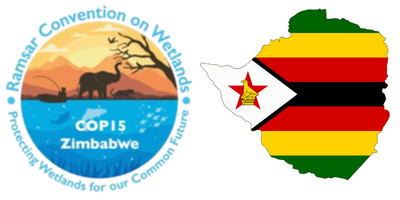Cleveland Dam
Cleveland Dam is a unique peri-urban wetland within the Zambezian biome. It is the largest protected natural area in Harare and is known as a key biodiversity hotspot and Important Bird Area. Dominated by miombo woodlands, shrubs, grasslands and aquatic plants which protect the watershed, the wetland offers an important stopover, breeding and feeding ground for thousands of migrating birds including the African pygmy goose Nettapus auritus, the maccoa duck Oxyura maccoa and the African spoonbill Platalea alba. Other noteworthy species include the leopard Panthera pardus, the African rock python Python sebae and the vulnerable ground pangolin Smutsia temminckii. With its water capacity of 910 million litres, the dam is at the source of the Mukuvisi River, which stretches 42 km into Lake Chivero and from there supplies most of the drinking water to Harare City and neighbouring towns. The ecosystem services provided by Cleveland Dam include water purification, flood control and soil formation. Human activities in the Site include fishing, harvesting of non-timber forest products, bird watching, canoeing, tourism and walking safaris.
Administrative region:
Harare Metropolitan Province
Site number: 2102
Area: 1,050 ha
Designation date: 03-05-2013
Coordinates: 17°49’S 31°09’E
Wetlands are vital for human survival. They are among the world’s most productive environments; cradles of biological diversity that provide the water and productivity upon which countless species of plants and animals depend for survival.
Wetlands are indispensable for the countless benefits or “ecosystem services” that they provide humanity, ranging from freshwater supply, food and building materials, and biodiversity, to flood control, groundwater recharge, and climate change mitigation.
Yet study after study demonstrates that wetland area and quality continue to decline in most regions of the world. As a result, the ecosystem services that wetlands provide to people are compromised.
Managing wetlands is a global challenge and the Convention presently counts 172 countries as Contracting Parties, which recognize the value of having one international treaty dedicated to a single ecosystem.
The Convention uses a broad definition of wetlands. This includes all lakes and rivers, underground aquifers, swamps and marshes, wet grasslands, peatlands, oases, estuaries, deltas and tidal flats, mangroves and other coastal areas, coral reefs, and all human-made sites such as fish ponds, rice paddies, reservoirs and salt pans.
Zimbabwe's Vision 2030 aims to transform the country into a middle-income economy that is prosperous, inclusive, and sustainable. Central to this vision is the recognition of the importance of natural resources, including wetlands, in contributing to the nation’s socio-economic development and environmental health. Wetlands are vital ecosystems that support biodiversity, water security, climate resilience, and the livelihoods of communities.
As part of its commitment to sustainable development and environmental stewardship, Zimbabwe has incorporated the conservation and sustainable management of wetlands into its National Development Strategy 1 (NDS1), which covers the period from 2021 to 2025. The NDS1 serves as the country’s blueprint for achieving Vision 2030 and outlines key objectives, strategies, and actions to foster economic growth, environmental protection, and social well-being.
